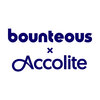Filter interviews by
ONE BCG Senior Software Engineer Interview Questions and Answers
6 Interview questions
To create a menu in Ionic v4, you can use the ion-menu component.
Use the ion-menu component in your app's HTML template to define the menu layout.
Configure the menu content and behavior using attributes like side, type, and contentId.
Add ion-menu-toggle buttons in your app's main content area to toggle the menu.
Customize the menu styling and behavior using CSS and Angular logic.
Ionic v4 has significant performance improvements, new features like lazy loading, and better support for web components.
Improved performance with faster rendering and reduced load times
Introduction of lazy loading for better app performance
Better support for web components integration
Updated design system with new features like CSS variables and shadow parts
Ionic life-cycle hooks are methods that allow developers to perform actions at specific points in the life-cycle of an Ionic component.
Ionic life-cycle hooks include ionViewWillEnter, ionViewDidEnter, ionViewWillLeave, ionViewDidLeave, ionViewWillUnload, and ionViewDidUnload.
These hooks can be used to perform tasks such as data loading, navigation, and cleanup.
For example, ionViewWillEnter is called just before th...
To translate an Ionic app in multiple languages, you can use ngx-translate library.
Use ngx-translate library for Angular to handle translations in Ionic app
Create language files for each supported language with key-value pairs for translations
Implement language switch functionality to allow users to change languages
Use pipes in HTML templates to display translated text dynamically
Deploying to iOS and Android apps involves using platform-specific tools and following specific guidelines.
For iOS, use Xcode to build and deploy the app to the App Store or TestFlight.
For Android, use Android Studio or Gradle to build and deploy the app to Google Play Store or other distribution channels.
Follow platform-specific guidelines for app submission, including app signing, metadata, and screenshots.
Test ...
Angular life-cycle hooks are methods that allow you to tap into specific points in a component's life-cycle.
ngOnChanges: Called when an input property changes
ngOnInit: Called once the component is initialized
ngDoCheck: Called during every change detection run
ngAfterContentInit: Called after content (ng-content) has been projected into the component
ngAfterContentChecked: Called after every check of the projected co...
ONE BCG Senior Software Engineer Interview Experiences
1 interview found
I applied via Referral and was interviewed in May 2023. There were 3 interview rounds.

(5 Questions)
- Q1. Tell me about yourself
- Q2. Explain Ionic life-cycle hooks
- Ans.
Ionic life-cycle hooks are methods that allow developers to perform actions at specific points in the life-cycle of an Ionic component.
Ionic life-cycle hooks include ionViewWillEnter, ionViewDidEnter, ionViewWillLeave, ionViewDidLeave, ionViewWillUnload, and ionViewDidUnload.
These hooks can be used to perform tasks such as data loading, navigation, and cleanup.
For example, ionViewWillEnter is called just before the com...
- Q3. How is the ionic framework v4 different from v3?
- Ans.
Ionic v4 has significant performance improvements, new features like lazy loading, and better support for web components.
Improved performance with faster rendering and reduced load times
Introduction of lazy loading for better app performance
Better support for web components integration
Updated design system with new features like CSS variables and shadow parts
- Q4. How do you create a menu in Ionic v4?
- Ans.
To create a menu in Ionic v4, you can use the ion-menu component.
Use the ion-menu component in your app's HTML template to define the menu layout.
Configure the menu content and behavior using attributes like side, type, and contentId.
Add ion-menu-toggle buttons in your app's main content area to toggle the menu.
Customize the menu styling and behavior using CSS and Angular logic.
- Q5. Explain Angular life-cycle hooks
- Ans.
Angular life-cycle hooks are methods that allow you to tap into specific points in a component's life-cycle.
ngOnChanges: Called when an input property changes
ngOnInit: Called once the component is initialized
ngDoCheck: Called during every change detection run
ngAfterContentInit: Called after content (ng-content) has been projected into the component
ngAfterContentChecked: Called after every check of the projected content
...
(3 Questions)
- Q1. Tell me about work projects for Ionic & Angular
- Q2. How to translate ionic app in multiple languages?
- Ans.
To translate an Ionic app in multiple languages, you can use ngx-translate library.
Use ngx-translate library for Angular to handle translations in Ionic app
Create language files for each supported language with key-value pairs for translations
Implement language switch functionality to allow users to change languages
Use pipes in HTML templates to display translated text dynamically
- Q3. How to deploy to iOS and Android Apps?
- Ans.
Deploying to iOS and Android apps involves using platform-specific tools and following specific guidelines.
For iOS, use Xcode to build and deploy the app to the App Store or TestFlight.
For Android, use Android Studio or Gradle to build and deploy the app to Google Play Store or other distribution channels.
Follow platform-specific guidelines for app submission, including app signing, metadata, and screenshots.
Test the a...
Skills evaluated in this interview
Top trending discussions






Interview questions from similar companies

Senior Software Engineer Interview Questions & Answers
Optum Global Solutionsposted on 26 Feb 2021
I applied via Company Website and was interviewed before Feb 2020. There were 4 interview rounds.
Interview Questionnaire
4 Questions
- Q1. .Net support related questions for example 1. What to do when applicable is down. 2. how to check IIS error logs.
- Q2. Explain Projects you worked and your role in those.
- Q3. Explain scenario when you handled high pressure from client.
- Ans.
Handled high pressure from client by prioritizing tasks and communicating effectively.
Identified critical issues and addressed them first
Communicated regularly with the client to provide updates and manage expectations
Collaborated with team members to delegate tasks and ensure timely delivery
Maintained a calm and professional demeanor to avoid escalating the situation
- Q4. Explain release management.
- Ans.
Release management is the process of planning, scheduling, coordinating, and deploying software releases.
It involves identifying the scope of the release and the features to be included
Creating a release plan and schedule
Coordinating with different teams involved in the release process
Testing the release to ensure it meets quality standards
Deploying the release to production
Monitoring the release to ensure it is stable...
Interview Preparation Tips
Skills evaluated in this interview

Senior Software Engineer Interview Questions & Answers
Capgeminiposted on 2 Mar 2022

Good Practice
Interview Preparation Tips

I applied via Referral and was interviewed in Jul 2021. There were 4 interview rounds.
Interview Questionnaire
1 Question
- Q1. How to handle error in after deployed the project.
- Ans.
Handle errors after project deployment
Implement error logging and monitoring tools
Create a process for reporting and resolving errors
Use automated testing to catch errors before deployment
Have a backup plan in case of critical errors
Regularly review and update error handling procedures
Interview Preparation Tips
Skills evaluated in this interview

I appeared for an interview in May 2021.
(1 Question)
Round duration - 50 minutes
Round difficulty - Easy
A lot of questions were from Java and SQL . One programming question was asked. My interview didn't go well as I hadn't prepared anything from the DBMS part.
- Q1.
Find Duplicates in an Array
You are given an array/list
ARRconsisting of N integers, where each element is in the range 0 to N - 1. Your task is to identify all duplicate elements present inARR.Input:
... - Ans.
Find duplicates in an array of integers within a specified range.
Iterate through the array and keep track of seen elements using a hash set.
For each element, check if it has been seen before and add it to the result if it has.
Return the list of duplicate elements found in the array.
Interview Preparation Tips
Tip 1 : Must do Previously asked Interview as well as Online Test Questions.
Tip 2 : Go through all the previous interview experiences from Leetcode.
Tip 1 : Every skill must be mentioned.
Tip 2 : Focus on skills, projects and experiences more.
Skills evaluated in this interview

I applied via Naukri.com and was interviewed before Jan 2022. There were 3 interview rounds.

(2 Questions)
- Q1. Questions on selenium
- Q2. Question on sql and project
(2 Questions)
- Q1. Existing offer details
- Q2. Possibility of relocating
- Ans.
Yes, I am open to relocating for the right opportunity.
I am willing to consider relocation if the job is a good fit
I am open to discussing relocation packages and assistance
I am flexible with regards to location and willing to explore new opportunities
Interview Preparation Tips

I applied via Company Website and was interviewed in Jan 2021. There were 3 interview rounds.
Interview Questionnaire
8 Questions
- Q1. Asp.net basics, web api basics.
- Q2. Oops concepts
- Q3. View state
- Q4. State mangement
- Q5. Abstract class vs interface
- Ans.
Abstract class is a class that cannot be instantiated, while an interface is a contract that a class must implement.
Abstract classes can have method implementations, while interfaces cannot
A class can implement multiple interfaces, but can only inherit from one abstract class
Abstract classes can have constructors, while interfaces cannot
Interfaces can have default method implementations since Java 8
- Q6. Delegate, dependancy injection
- Q7. Solid principles, design pattern related questions
- Q8. What is your company's code review process? What practices you follow while writing code. How do you test your code manually?
- Ans.
Our code review process involves peer reviews and automated testing. We follow best practices and use manual testing for edge cases.
Peer reviews are conducted for all code changes before merging into the main branch
We use automated testing tools like Jest and Enzyme for unit and integration testing
We follow best practices like writing clean and modular code, using meaningful variable names, and commenting where necessa...
Interview Preparation Tips
Skills evaluated in this interview

Interview Questionnaire
1 Question
- Q1. Forwardref,browser animation module , build angular library, providers in services

I applied via Company Website and was interviewed in Mar 2021. There were 4 interview rounds.
Interview Questionnaire
4 Questions
- Q1. I was asked on t sql
- Q2. I was asked on system functions
- Q3. I was asked on triggers
- Q4. Stored procedures
Interview Preparation Tips

I applied via Naukri.com and was interviewed in Mar 2021. There was 1 interview round.
Interview Questionnaire
1 Question
- Q1. Theory based on previous experience and projects done. What and all communication protocols have you worked on and explain. Write a demo device driver code. Pointers, storage classes, function pointers. W...
Interview Preparation Tips
ONE BCG Interview FAQs
Tell us how to improve this page.
ONE BCG Interviews By Designations
- ONE BCG Quality Analyst Interview Questions
- ONE BCG Finance Intern Interview Questions
- ONE BCG Software Engineer Interview Questions
- ONE BCG District Manager Interview Questions
- ONE BCG Senior Software Engineer Interview Questions
- ONE BCG Front end Developer Interview Questions
- ONE BCG Consultant Interview Questions
Interview Questions for Popular Designations
- Software Developer Interview Questions
- Software Engineer Interview Questions
- Senior Engineer Interview Questions
- System Engineer Interview Questions
- Associate Software Engineer Interview Questions
- Project Engineer Interview Questions
- Senior Software Developer Interview Questions
- Lead Engineer Interview Questions
- Show more
Overall Interview Experience Rating
based on 1 interview experience
Difficulty level
Duration
Senior Software Engineer Interview Questions from Similar Companies
ONE BCG Senior Software Engineer Reviews and Ratings
based on 1 review
Rating in categories
5-8 Yrs
Not Disclosed
|
Software Engineer
32
salaries
| ₹3 L/yr - ₹11.6 L/yr |
|
Software Developer
10
salaries
| ₹5 L/yr - ₹8.6 L/yr |
|
Business Analyst
9
salaries
| ₹5.7 L/yr - ₹10.8 L/yr |
|
Quality Analyst
9
salaries
| ₹3.6 L/yr - ₹7 L/yr |
|
Senior Quality Analyst
7
salaries
| ₹5.6 L/yr - ₹11 L/yr |

Accenture

Wipro

Cognizant

Capgemini
- Home >
- Interviews >
- ONE BCG Interview Questions














